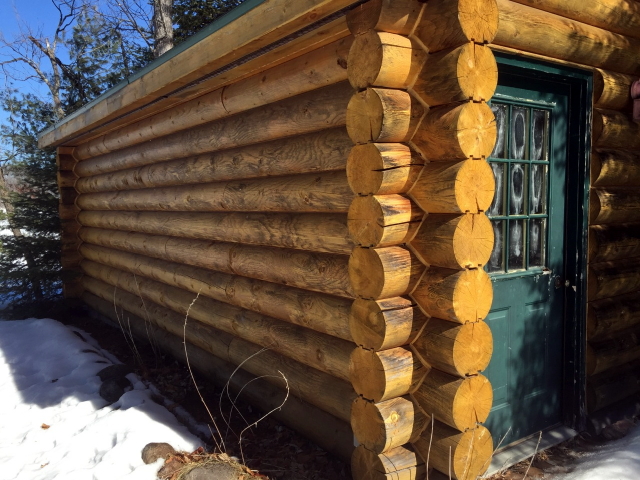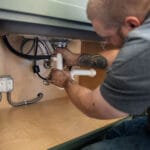Imagine waking up to the rustic charm and cozy warmth of a log home. It sounds like a dream, right?
The allure of log homes with their natural beauty and unique appeal is undeniable. But, before you dive headfirst into the world of log living, it’s crucial to understand the challenges you might face. Are you considering a log home or perhaps already own one?
You may have questions about maintenance, energy efficiency, or even pest control. These are common concerns that many log home enthusiasts encounter. By addressing these issues head-on, you can better protect your investment and enjoy the full benefits of your log home. This article will guide you through the most common problems with log homes. We’ll provide practical solutions that will help you feel confident and informed. Keep reading to discover how you can overcome these challenges and fully enjoy your log home experience.

Credit: www.trulogsiding.com
Maintenance Demands
Log homes need regular care to stay strong. Weather can cause wood to crack and rot. Pests like termites can also harm them.
Log homes charm with their rustic appeal. Yet, they demand significant maintenance. Caring for a log home is a constant commitment. It involves inspections, weatherproofing, and pest control. To preserve their beauty, regular upkeep is essential. Let’s dive into these maintenance demands.Routine Inspections
Routine inspections are crucial for log homes. Logs can settle and shift over time. This movement affects structural integrity. Regular checks help spot issues early. Cracks or gaps often need sealing. This prevents moisture intrusion. Inspecting logs ensures durability. It avoids costly repairs later. Owners should schedule inspections annually.Weather Impact
Weather significantly impacts log homes. Rain and snow challenge wood surfaces. Constant exposure leads to decay. Protective finishes can help. They shield logs from moisture damage. Sun exposure also affects logs. UV rays cause fading. Applying UV-resistant stains maintains color. Weatherproofing is a must for longevity.Pest Control
Pests can be a headache for log home owners. Termites and beetles threaten wood structures. Regular pest control is essential. Inspections can catch infestations early. Treating logs with insecticides offers protection. Rodents also pose a risk. They gnaw through logs, creating holes. Keeping pests at bay preserves the home’s beauty.
Credit: restorelogs.com
Energy Efficiency Issues
Log homes have a unique charm that draws many people to their rustic appeal. However, one major drawback is their energy efficiency. These homes often face challenges that can make heating and cooling quite costly. Understanding these issues can help you make informed decisions about living in or buying a log home.
Insulation Challenges
Log homes naturally lack the insulation that conventional homes have. The solid logs, though picturesque, don’t offer the same barrier against temperature changes as insulated walls. You might find your home colder in winter and hotter in summer. Adding insulation is possible, but it can be tricky.
Have you ever tried to insulate a log wall without compromising its look? It’s a challenge many face. Look into products designed for log homes; they might offer a good balance between aesthetics and efficiency.
Heating And Cooling Costs
With insulation challenges come higher heating and cooling costs. You may find yourself cranking up the heat in winter and blasting the air conditioning in summer. This can lead to surprisingly high utility bills. Efficient systems can help, but they require a significant upfront investment.
Consider energy-efficient heating systems tailored for log homes. They might seem costly at first but can save you money in the long run. Have you checked your current setup? Upgrading could pay off.
So, what’s your experience with energy efficiency in log homes? Do the high costs surprise you? Share your thoughts and tips below; your insights could help others navigating the same issues.
Structural Concerns
Log homes offer a rustic charm and a cozy atmosphere. Yet, they come with specific structural concerns. Understanding these issues helps in maintaining a safe and durable structure. Let’s delve into two major concerns: settling and shrinking, and foundation stability.
Settling And Shrinking
Logs are natural materials. They shrink and settle over time. This can create gaps in the walls. Gaps may lead to drafts and energy loss. Regular maintenance is essential. Checking and adjusting the logs ensures a snug fit. Properly seasoned logs reduce shrinking issues. Builders must use high-quality logs.
Foundation Stability
A solid foundation is crucial for log homes. Improper foundation leads to uneven settling. This results in cracks and structural issues. Soil type affects foundation stability. Clay soil can expand and contract. This movement stresses the foundation. Regular inspections identify potential problems early. Reinforcing the foundation ensures long-term durability.
Moisture Problems
Moisture problems often plague log homes, leading to mold, rot, and structural damage. Regular maintenance and proper sealing help prevent these issues. Addressing leaks and ensuring good ventilation can protect the home’s integrity.
Moisture problems can significantly affect log homes. These charming structures need proper care to withstand the elements. Moisture can lead to various issues, compromising the home’s integrity. Understanding these problems helps in maintaining a healthy log home. Let’s explore some common moisture-related challenges.Rot And Decay
Log homes are prone to rot and decay. Moisture seeps into the wood, leading to deterioration. This process weakens the structure over time. Visible signs include soft spots and dark stains. Regular inspections help spot early signs of decay. Preventive measures like sealing can protect your logs. Keeping logs dry is key to preventing rot. Ensure proper drainage around the home.Mold And Mildew
Mold and mildew thrive in damp environments. They often appear as black or white patches. These fungi can damage the wood and affect indoor air quality. Spores can trigger allergies and respiratory issues. Keep the interior well-ventilated to reduce moisture. Regular cleaning and maintenance are essential. Look for signs of mold in hidden areas. Treat any affected areas promptly to prevent spread.Cost Implications
Building and maintaining log homes often involves high costs. These costs include regular maintenance, specialized materials, and skilled labor. Repairing damage from pests or weather can also add to expenses.
Owning a log home can be a dream for many, offering a rustic charm and a connection to nature. However, the financial aspect of this dream can often be more complex than anticipated. The cost implications of log homes encompass several factors that homeowners must be prepared for. From the initial investment to unexpected repairs, each aspect demands careful consideration to avoid financial pitfalls.Initial Investment
The initial cost of building a log home is often higher than a conventional house. The unique materials and craftsmanship required can add a significant premium. This is especially true if you choose a custom design or high-quality logs. When I built my log cabin, I was surprised by the additional expenses in sourcing quality timber. The allure of beautiful, handcrafted logs can quickly inflate your budget. It’s crucial to account for these costs early on to avoid financial strain.Unexpected Repairs
Log homes are prone to unique maintenance challenges. Weather conditions can lead to issues like wood rot, pest infestations, and settling problems. These unexpected repairs can be costly and frequent, particularly if regular maintenance is neglected. Consider the story of my neighbor, who faced a hefty repair bill due to termite damage. Regular inspections could have prevented this expense. Are you prepared to handle such surprises in your budget? Regular upkeep, like staining and sealing, is essential to protect your investment. Yet, these tasks can add up over time. Are you ready to commit both time and money to maintain the beauty and structure of your log home? Understanding these cost implications can help you make informed decisions. Are you financially prepared for the journey of owning a log home?Environmental Considerations
Log homes face environmental challenges like deforestation and energy inefficiency. Wood requires regular maintenance to prevent decay. Some log treatments can harm ecosystems.
When considering building or buying a log home, it’s important to think about the environmental impact. Log homes offer a rustic charm, but they also raise unique environmental concerns. As you explore this option, understanding the sustainability and ecological impact is crucial.Sustainability Concerns
The sustainability of log homes often comes under scrutiny. Timber is a renewable resource, but logging practices can be harmful if not managed responsibly. Are the logs used in your potential home sourced from certified sustainable forests? Consider the energy efficiency of log homes. While logs have natural insulating properties, they may not always meet modern energy standards. This could mean higher energy consumption over time. Have you factored in the cost of additional insulation or energy-saving measures?Impact On Local Ecosystems
Building a log home can significantly impact local ecosystems. Clearing land for construction disrupts habitats and alters local biodiversity. This is especially true in forested areas where wildlife is abundant. Think about the surrounding flora and fauna. Log home construction can affect soil quality and water runoff patterns. Are you prepared to take measures to minimize these impacts? Reflect on the long-term effects. The choice to build a log home isn’t just about aesthetics or personal preference. It’s about being a responsible steward of the land. How will your decision impact the local environment in the years to come? By asking these questions, you can ensure that your dream log home aligns with your values and has a positive environmental footprint.Resale Challenges
Log homes offer charm and a connection to nature. Yet, selling them can be tricky. These unique homes face specific challenges in the real estate market. Understanding these issues can help potential sellers. Let’s explore some common resale challenges log home owners face.
Market Demand
Log homes appeal to a niche audience. Not everyone wants a rustic lifestyle. This limits the pool of potential buyers. Many buyers prefer conventional homes. They often seek modern amenities and styles.
In some areas, log homes may be scarce. This can be a double-edged sword. Scarcity can drive interest, but it may also deter buyers. They might worry about resale value or maintenance.
Valuation Issues
Valuing log homes can be difficult for appraisers. These homes are unique, with distinct features. Standard valuation methods often don’t apply. Appraisers may lack experience with log homes.
Unique features can lead to inaccurate valuations. This can affect financing options for buyers. Lenders might be hesitant to approve loans. They may see log homes as risky investments.

Credit: restorelogs.com
Frequently Asked Questions
What Are Common Issues With Log Homes?
Log homes can have issues like insect infestation, settling problems, and maintenance challenges. Regular upkeep is essential to prevent these.
How Do Log Homes Handle Weather Changes?
Log homes can shift due to moisture and temperature changes. Proper sealing and ventilation help maintain stability and comfort.
Are Log Homes Energy-efficient?
Log homes have natural insulation but may need extra sealing. Energy efficiency improves with modern techniques and materials.
Do Log Homes Require Special Maintenance?
Yes, log homes need regular inspections for rot, insects, and structural issues. Routine maintenance helps ensure longevity.
Can Log Homes Be Modified Easily?
Modifying log homes can be complex due to their structure. Consult professionals for safe and effective changes.
Conclusion
Log homes have unique challenges worth considering. Maintenance demands can be high. Moisture can lead to rot. Insects may invade wood structures. Settling and shifting are common issues. Energy efficiency might be lower compared to other homes. These problems require time and money to address.
Careful planning can mitigate some risks. Choose quality materials and skilled builders. Regular inspections are vital for longevity. Log homes are beautiful but demanding. Weigh the pros and cons before deciding. Proper upkeep ensures lasting beauty and comfort. With effort, a log home can be a cozy retreat.




